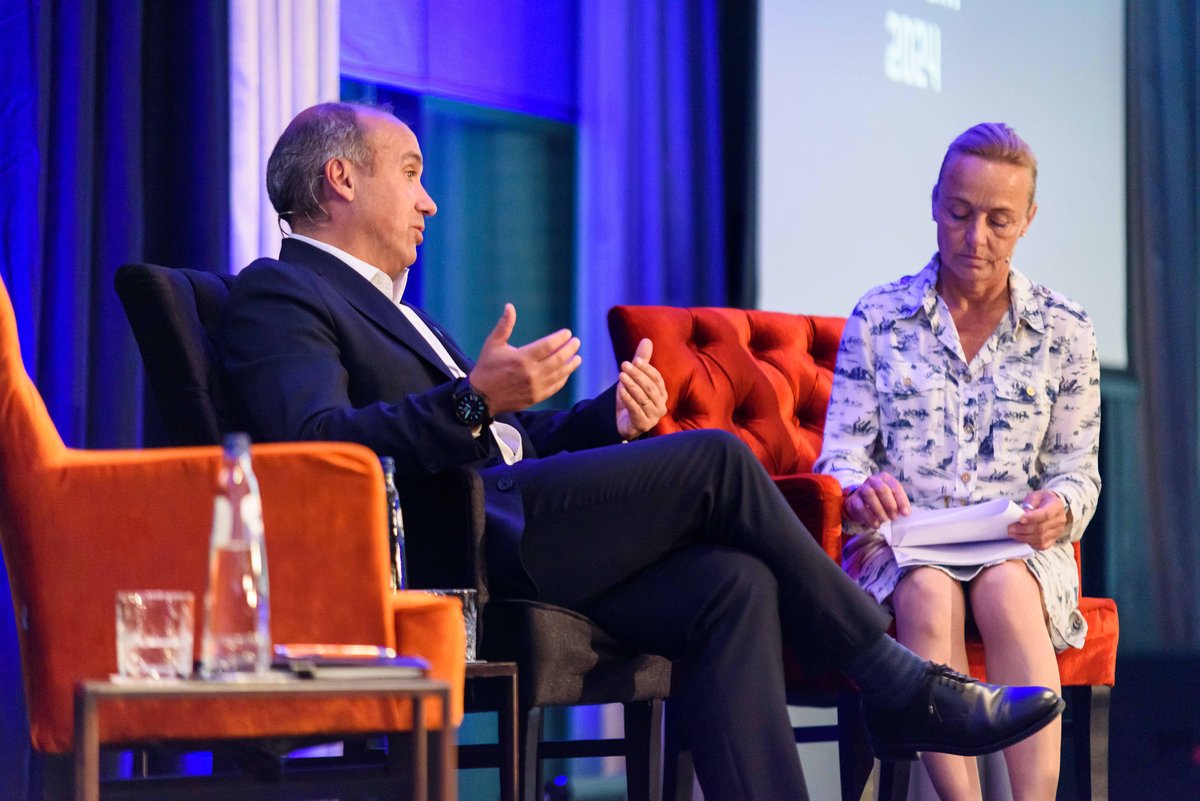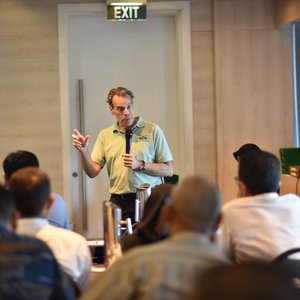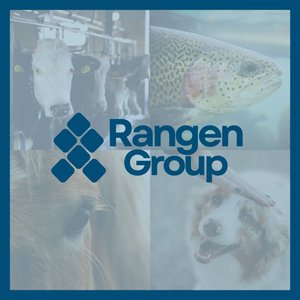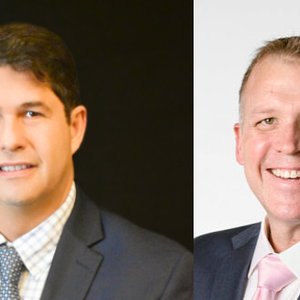For the past three years, the Global Shrimp Forum (GSF) has brought together industry professionals from around the world, welcoming thought leaders, producers, suppliers, and stakeholders to address key challenges and opportunities shaping the future of shrimp aquaculture and trade. This year’s edition will take place from September 2-5 in Utrecht.
How are tariffs affecting the shrimp markets?
The program of GSF is always focused on the most urgent and relevant topics for the shrimp industry. Unsurprisingly, U.S. tariffs and their impact on global shrimp trade flows are at the forefront. Willem van der Pijl, managing director of the Global Shrimp Forum, told Aquafeed.com that it is still too early to fully gauge the impact, with the industry closely watching the next deadline on July 9.
However, he predicts that the U.S. tariffs will accelerate existing trends. Ecuador has been ramping up shrimp production, and although there was a slight slowdown earlier this year, output is expected to grow significantly in 2025. “That shrimp has to go somewhere. Whether China absorbs it or not, it will end up in other markets,” van der Pijl said.
Ecuador traditionally caters to the head-on shell-on market, but not all of its shrimp meet that quality. The rest must be processed into headless shell-on or peeled products, which are typically sold in the U.S. and European markets, directly competing with suppliers from Asia, primarily India, Vietnam, and Indonesia.
India continues to dominate the raw peeled shrimp segment. For Ecuador to grow its presence in that market, it needs time to build up its peeling and processing capacity. Still, Ecuador has already made significant inroads into the headless shell-on market and, to some extent, the peeled shrimp segment. Since India has not reduced its shrimp output, it is redirecting its product to cooked and other value-added formats for markets like China and Europe. These products currently face little to no competition from Ecuador, but they do compete with shrimp from Indonesia, Vietnam, and to a lesser extent, Thailand and China.
“This trend is being accelerated by the U.S. tariffs,” van der Pijl explained. “If the tariff structure remains the same after July 9, Ecuador will have the lowest tariffs, making it even more competitive, followed by India. Indonesia and Vietnam will have the highest tariffs and may lose their competitiveness. The real question is what that will mean for the future of the shrimp industry in those countries.”
A diverse program
After tariffs, the next most pressing issue for the shrimp industry is whether China will continue to consume shrimp at the same levels as in recent years, and whether it can absorb the growing output from Ecuador and other global producers. If China's capacity to absorb shrimp is limited, producers may need to seek alternative markets. GSF will feature a session with several Chinese companies sharing their insights on the current state of the Chinese market, the supply chain, and future outlooks.
Another session will spotlight the shrimp industries in Mexico and Brazil, two often-overlooked markets because their industries are entirely focused on domestic consumption rather than exports.
Beyond macroeconomic trends and trade dynamics, the event will offer a broad and varied program. For the first time since the forum’s inception, a Traceability & Verification session will return. “We’ll take a deep dive into the latest developments from the Seafood Traceability Task Force, as well as explore other ongoing initiatives and tech companies making real progress in helping the industry improve traceability and verification,” said van der Pijl.
Several side events will also take place. On the first day, there will be an Inclusive Supply Chains and Continuous Improvement Seminar, the Wild-Caught Shrimp Summit and the Global Shrimp Council Update and Outreach Meeting.
This year, for the first time, GSF will host a session exclusively for retailers and large foodservice buyers, focusing on sustainability and ethics. Topics will include the challenges and opportunities of green claims, as well as social issues within the seafood supply chain, specifically human rights due diligence and grievance mechanisms. “We really hope this session will encourage more retailers to attend. The idea is to provide them with a safe space to collaborate on these topics, and then join the wider forum for broader engagement,” van der Pijl explained.
On Tuesday evening, the organization is bringing back its VIP event, where sponsors, speakers, and invited guests will gather with Jennifer Bushman, the creative mind behind the aquaculture documentary series Hope in the Water. “We’ll premiere the two shrimp-focused stories from Hope in the Water, marking the first time they’ll be shown in Europe – they have only aired in the U.S. so far. There will also be a Q&A session with Jennifer and Loc Tran, one of the featured farmers,” van der Pijl said.

Carlos Diaz and Melanie Siggs during the Global Shrimp Forum. Credits: Pierre Banoori
Projects for industry progress
The Global Shrimp Forum is a non-profit organization and every year, it allocates its financial surplus to initiatives that align with its mission.
One of these initiatives focuses on mangrove conservation and preventing deforestation, with a €25,000 grant awarded through the Forest Conservation Fund. The project supports mangrove protection efforts in Kalimantan, Indonesia, where local communities are actively involved in preserving the mangrove forests. Another portion of the budget has been allocated to Aquaculture Improvement Programs.
“In recent years, however, we’ve primarily directed funds toward research on topics that are pre-competitive in nature and offer broad benefits to the industry,” said Willem van der Pijl, managing director of the Global Shrimp Forum. “The first study, conducted two years ago, explored how to promote global shrimp consumption and inspire people to embrace it. Last year, we followed up with a study on consumer behavior and attitudes in the U.S. to support efforts in boosting shrimp consumption there.”
This year, GSF is funding two additional studies. The first focuses on climate impact and emissions within the shrimp supply chain, and the findings will be published in the months leading up to the forum.
“Understanding emissions in the shrimp supply chain is no easy task,” van der Pijl explained. “The data is fragmented and often difficult to access. We’ve partnered with Roxanne Nanninga and Anton Immink to compile and summarize current knowledge in a clear, accessible format that companies can use as a starting point – how to analyze emissions in their own supply chains and what steps they can take to improve sustainability. This is the first attempt to consolidate this information and make it broadly available, particularly for companies for whom this topic isn’t a daily focus.”
The second study, led by Melanie Siggs, examines the utilization of shrimp byproducts. “With the rise in demand for peeled shrimp, there’s also been a surge in processing byproducts,” van der Pijl noted. “As industry margins have narrowed significantly in recent years, finding ways to add value through byproduct use has become increasingly important.”
Siggs is working with Kontali to estimate the total volume of byproducts currently being generated and explore practical applications, such as converting lower-grade shrimp meal into animal feed, fertilizers, or chitosan.
Other trends
Animal welfare is becoming an increasingly important issue for retailers. On one hand, more retailers are prohibiting eyestalk ablation in their supply chains, which has led to the inclusion of non-ablation standards in both ASC and GlobalG.A.P. certifications. On the other hand, some retailers are also committing to the use of electrical stunning throughout the supply chain.
“It’s more difficult to implement stunning technology in Asia than in Latin America, but it’s gaining traction because if you want to be in the retail business, due to the stability of demand and pricing, you have to comply with these new requirements. Eventually, companies will find a way to make it happen, but the cost and implementation challenges may differ between regions,” said van der Pijl. “Right now, it’s only about 20 retailers committing to these new welfare standards, a small fraction of the global market, but the ripple effects are already being felt worldwide.”
When it comes to technology adoption, much attention has been given to farm-level innovations such as biomass monitoring tools and automated feeders. However, van der Pijl highlighted significant advancements in processing facilities, particularly the use of AI and machine vision for tasks like peeling and sorting shrimp. “These innovations could lead to substantial financial gains. GSF isn’t solely farm-focused; we address the entire value chain, so I’m pleased we’re shining a light on these developments,” he said.
From a sustainability standpoint, another key trend is the effort by feed companies to achieve ASC certification before October, reflecting growing environmental and social accountability within the supply chain.
Investment continues to be a hot topic, especially as the industry undergoes consolidation. “Capital is becoming more accessible for the largest companies, enabling them to expand, professionalize, and mature,” van der Pijl said.
A notable development in the venture capital space is the ripple effect of the eFishery case on the broader aquaculture startup ecosystem. “Many investors are now reevaluating whether startups seeking funding are truly investment-ready. It is a disappointing situation, but an extremely important conversation to have during GSF,” van der Pijl added.
“We strive to make the program the best of the best, not only in terms of networking and exclusivity, but also in delivering content that ensures attendees leave feeling fully up to date on the most urgent and relevant topics in the industry,” he said.
“As a cultural anthropologist, I’m deeply committed to people, culture, and community. In a fragmented industry like shrimp aquaculture, it's vital to foster a community of leaders who can come together to create a more resilient future. Every year, 60-70% of attendees return, which tells us we’re succeeding in building that community,” van der Pijl concluded.
For more information about the event, visit www.shrimp-forum.com.










